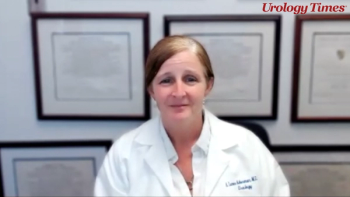
Higher paternal age influences risk of miscarriage
Independent of maternal age and multiple other factors, the odds of miscarriage are significantly higher in pregnancies conceived from fathers 40 years of age or older than from fathers under 25 years of age, according to the authors of a study published in Obstetrics & Gynecology (2006; 108:369-77).
Independent of maternal age and multiple other factors, the odds of miscarriage are significantly higher in pregnancies conceived from fathers 40 years of age or older than from fathers under 25 years of age, according to the authors of a study published in Obstetrics & Gynecology (2006; 108:369-77).
In the case-control study of 13,865 women from antenatal or postpartum interviews in the Jerusalem Perinatal Study, investigators compared 1,506 women reporting spontaneous abortion in pregnancy preceding the interview with 12,359 women reporting live births in their previous pregnancy. Investigators used logistic regression to adjust for maternal age, maternal diabetes, maternal smoking, history of spontaneous abortions before index pregnancy, parity at interview, and interval between the index pregnancy and the interview.
In pregnancies conceived from fathers under 25 years old, the adjusted odds ratio for spontaneous abortion was .59 (95% confidence interval, .45-.76, p<.0001) compared with that for fathers 25 to 29 years of age. The odds ratio for spontaneous abortion was 1.6 (95% CI, 1.2-2.0, p=.0003) in pregnancies conceived from fathers 40 years of age or older compared with the same reference group.
“Advanced paternal age may result in only a slight increase in the chance of spontaneous abortion for a specific couple,” said first author Karine Kleinhaus, MD, MPH, of Columbia University, New York. “Nevertheless, as childbearing is increasingly delayed in Western societies, this study provides important information for people who are planning their families.”
The study also adds to a growing understanding of how men’s age, health, and occupations can affect their partner’s pregnancies and their offspring’s future development.
Newsletter
Stay current with the latest urology news and practice-changing insights — sign up now for the essential updates every urologist needs.


















